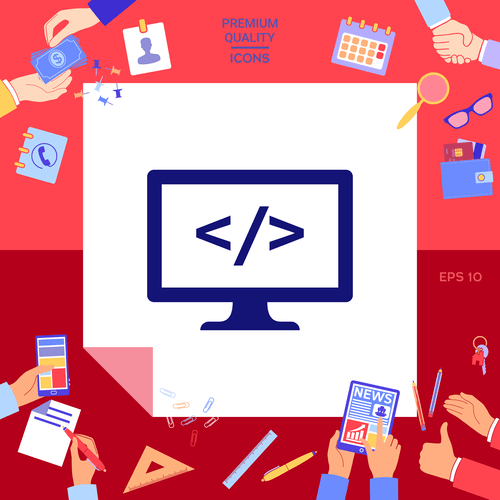Content
It’s a ‘value-driven approach to handle the software development projects which provide the best possible solution to meet customer needs and run a sustainable business. It helps organizations build new features and functionality with less time, money, resources, etc. The development process is never perfect, and it should be constantly reviewed and optimized. Analyze it in terms of focusing on value at every stage (less time, resources, better quality, etc.) and tighten the flow.
- This approach helps teams deliver faster, utilize resources more efficiently, produce higher-quality output, and ultimately provide more value to clients and app users.
- Depending on who you talk to, there are anywhere from four to seven principles of lean software development.
- Choosing a suitable software development methodology can be challenging.
- Additionally, agile teams gain knowledge by reflecting upon the success of their interim progress and adapt their software development process accordingly.
- Lean encourages doing business with concrete requirements.
- If your release doesn’t help you learn and doesn’t solve the customer’s issue, it’s useless.
Whether it is a mobile app, a CRM system, or any other product, we aim to bring simplicity in all aspects. The easier it is for users to interact with a product, the better engagement rates will be achieved. Postponing or partially completing tasks can considerably affect the value of the end product.
Improve work quality
Waste is anything that does not contribute value to the final product and interferes with the aim of delivering value to customers. This includes, but is not limited to, inefficient processes or project churn, crossing boundaries/departments, and features that won’t be used. Eliminating waste is the guiding principle in lean software development. For us, “the lean methodology” has grown into a set of 12 principles applied to our day-to-day work with customers regardless of the project type or time frame. Our custom approach is built on the conventional principles of lean management.

Deadlines are reached much more quickly and product/feature deliverables reach customers in a faster time improving customer relations with the organization. Lean agile, or lean software development, originates from the principles of lean manufacturing. The concept was brought into manufacturing to improve profits by reducing costs instead of solely relying on increased sales. If a company can eliminate waste and become more efficient, it can save money, thereby increasing overall profits. The specific practices outlined here provide a baseline step-by-step approach to implementing a lean software development process.
Optimize the Whole
At MindK, we managed to make the daily standup meetings a part of the team’s “tsune”. It helps us keep everyone in the loop and discover any unexpected issues. Just make sure everybody feels free and safe to give each other unvarnished feedback. As a rule, we have a small team, so we lean methodology software use these questions for daily stand-up meetings. Daily standup meetings are designed to coordinate work and synchronize daily efforts. They happen once per day to gather statuses from each team member, evaluate progress, reveal bottlenecks, and decide what everybody should do today.

You can start this process by identifying each step in your workflow, making a list of tools and materials needed for them, and building the exact number of items required to keep your inventory low. Another key principle for lean management is eliminating unnecessary things that do not add to customer value. This also refers to changes in a product that result in customer dissatisfaction or confusion. The trick to Lean software development is, of course, building an experienced and competent team that you fully trust.
Lean software development tools and processes
Second, releasing a product before other companies offer similar software gives you a huge competitive edge. Third, delivering fast saves money and makes the development process more result-oriented. https://globalcloudteam.com/ To do this, software development teams create the minimum viable product , or an early version of a software product that has just enough features to validate an idea and collect user feedback.
It’s the perfect platform for your team to start respecting one another while expressing themselves. They reduce conflict and give your team members an outlet to comfortably express themselves to one another. T processes needs to be guided by a respectful, proactive conversation that encourages support and healthy competition. Is standard across all your project spaces, your team will always be able to easily identify the most important tasks. They can even filter their tasks by priority to attempt the most important tasks first.
Optimize the whole
To eliminate waste, software development teams should remove anything that doesn’t add value to users from their to-do list. Lean software development is about minimalism, so dev teams need to remove waste when working leanly. This article provides a comprehensive guide on what is Lean software development, its definition, the difference between lean and agile, the key principles and benefits of lean technology.

They follow repeatable structures and workflows, rely on strict quality requirements, and are highly dependent on team collaboration. Lou is a JavaScript full stack engineer with a passion for culture, approach, and delivery. He believes the best products emerge from high performing teams and practices. Lou is a fan and advocate of old-school lean and systems thinking, XP, continuous delivery, and DevOps.
What is Lean Software Development? Principles, Benefits & Risks
Lean encourages teams to work together and remove waste from the process. This way, teams can work more effectively and deliver better customer software. Lean also makes for excellent communication within the team, so each member’s opinion can significantly influence the final result. And since engineers can get to know each other better and work more efficiently together, this process may become a great team-building experience. You can use this Lean practice to identify the steps necessary to complete the project, the critical paths, where delays tend to happen, and more. This way, you can set goals for improvement in every stage of work.
